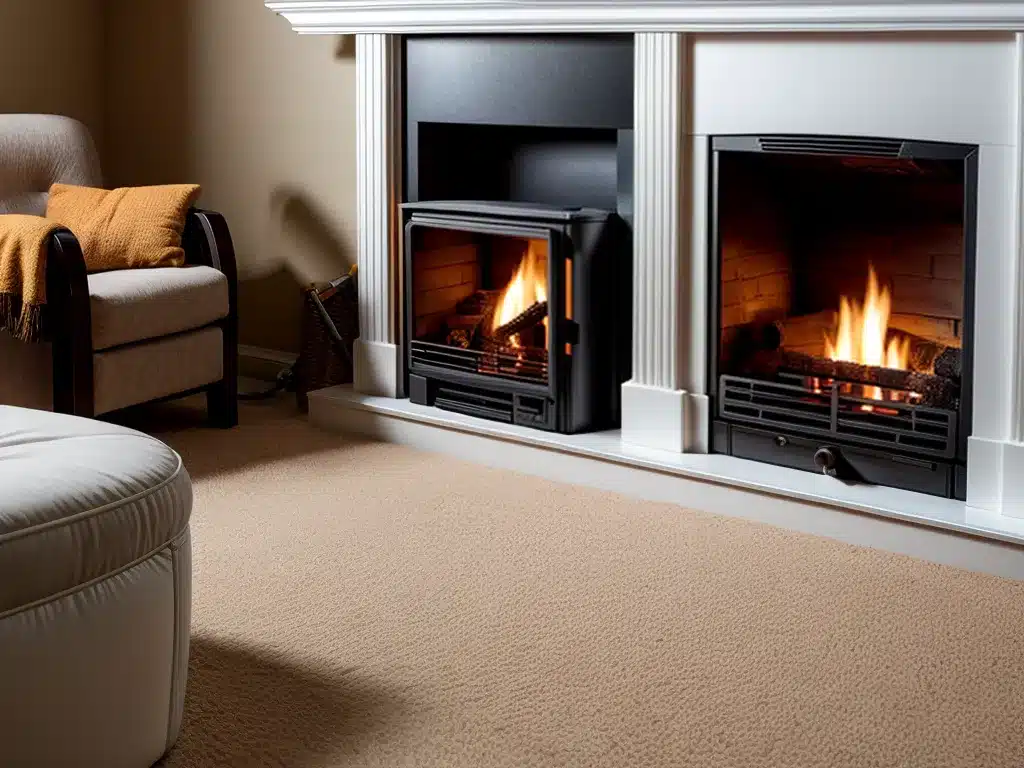Introduction
As winter approaches, homeowners begin relying more heavily on indoor heating appliances like furnaces and fireplaces to stay warm. While these appliances provide cozy warmth and ambiance, they also come with the risk of producing dangerous carbon monoxide (CO) gas if not properly maintained. That’s why an annual cleaning by a professional is so important for optimal performance and safety.
In this article, I’ll explain what carbon monoxide is, why furnaces and fireplaces produce it, the health dangers it poses, and the key steps involved in professional cleaning and maintenance services. My goal is to emphasize just how critical annual servicing is to avoid carbon monoxide poisoning in your home.
What Is Carbon Monoxide?
Carbon monoxide (CO) is an odorless, colorless, poisonous gas produced whenever fuel is burned without enough oxygen present. Common fuels like natural gas, propane, oil, kerosene, charcoal, and gasoline all produce CO when burned.
Appliances like furnaces, fireplaces, stoves, generators, and vehicles produce CO as a byproduct of incomplete combustion. This happens if the fuel-burning appliance has any kind of malfunction, blockage, leak, or poor ventilation.
The Dangers of Carbon Monoxide Exposure
Carbon monoxide is extremely dangerous because you can’t see it or smell it. Prolonged exposure to CO can cause flu-like symptoms, confusion, fainting, and even death.
Here’s why CO is so hazardous:
-
It prevents your red blood cells from carrying oxygen throughout your body. This oxygen deprivation causes tissue damage and eventually vital organ failure.
-
It combines more readily with hemoglobin than oxygen does. So CO saturates your blood very efficiently, blocking oxygen absorption.
-
It accumulates quickly since it’s continuously produced as long as the malfunctioning appliance keeps running.
According to the CDC, over 400 people die in the U.S. each year from accidental CO poisoning, with thousands more treated for exposure.
How Furnaces Produce Carbon Monoxide
Furnaces produce CO if:
- Cracks develop in the heat exchanger
- Vents or chimneys become blocked
- Insufficient air is available for complete fuel combustion
Prolonged use under any of these conditions allows CO to leak into your home rather than venting outside. A cracked heat exchanger is especially dangerous because you can’t see the cracks or leaks by just looking at the furnace externally.
That’s why a detailed inspection by a technician is required to check furnace components for proper operation.
How Fireplaces Produce Carbon Monoxide
Fireplaces produce CO when:
- Flue passageways accumulate dense creosote buildup
- Chimney caps or dampers become blocked
- Home pressure changes prevent smoke from venting outside
Burning certain materials like treated wood, plastics, or cardboard also increases CO production.
All of these increase CO levels either by preventing complete combustion or blocking proper venting. A technician can clean out flues and chimneys and ensure fireplaces are structurally sound.
The Importance of Annual Maintenance
The only way to detect potential CO hazards in furnaces and fireplaces is through professional annual maintenance. DIY cleaning simply can’t identify all the hidden issues a technician can find.
A comprehensive maintenance check includes:
- Dismantling, cleaning, and inspecting heat exchangers, burners, vents, chimneys, flues, fans, pipes etc.
- Checking gas pressure, carbon monoxide output levels, and efficiency
- Identifying leaks, cracks, blockages, or malfunctions
- Adjusting components and calibrating furnace performance
- Clearing away combustible creosote deposits in fireplaces
This extensive inspection and tuning optimizes performance and safety. It also extends the lifespan of expensive heating equipment.
Safety First
As a homeowner, avoiding CO poisoning should be your top priority. Taking a few precautions goes a long way:
- Install CO detectors on every level of the home
- Never idle vehicles in attached garages
- Check chimneys yearly for blockages
- Upgrade old appliances that use obsolete venting methods
But the single most important step is making that annual maintenance call to keep furnaces and fireplaces running cleanly and emitting only warm, healthy heat.
Booking Professional Cleaning Services
Now that you know the value of annual furnace and fireplace servicing, here are some tips for hiring the right cleaning company:
-
Check credentials & licenses. Only hire certified, insured, and bonded technicians.
-
Read reviews. Choose a company with a long history of satisfied customers. This indicates reliability.
-
Compare services. Get multiple quotes and weigh the costs against services offered.
-
Ask about CO testing. Use companies that check CO output as part of the standard cleaning package.
-
Request a full inspection report. The technician should provide this detailing all steps performed and components examined.
-
Get maintenance reminders. Sign up for service plan reminders so you never forget your annual visit.
Breathe Easier with Clean Heating Appliances
As an informed homeowner, you now understand the silent dangers of carbon monoxide as well as the essential role professional technicians play in reducing risks.
Don’t take any chances with your family’s safety. Make that call today to schedule comprehensive furnace and fireplace maintenance services. Then you can truly relax and enjoy a warm home all winter long.







